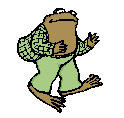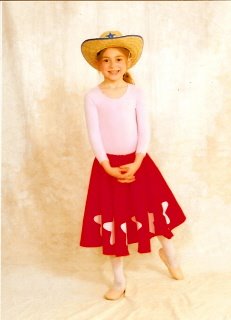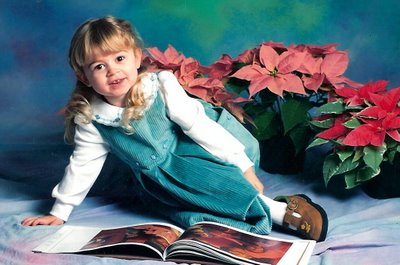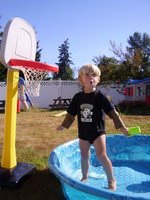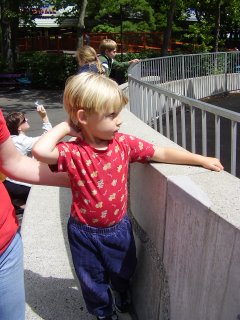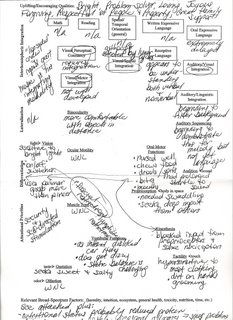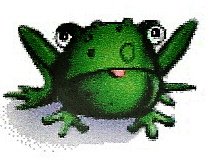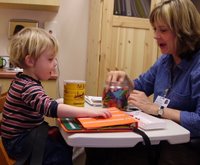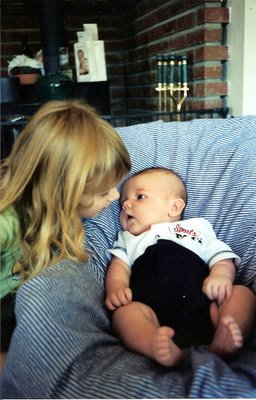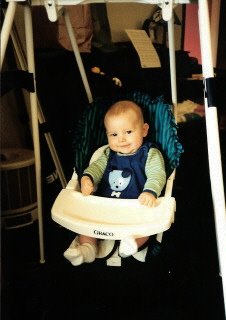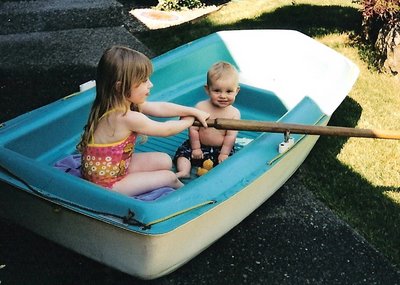 HANDLE methods and exercises are proprietary information. Judith made it clear that she did not mind if I shared the information, but because the exercises are recommended individually based on an individual's needs and must be done correctly (she requires caregiver's and clients to demonstrate they know how to do the exercises)they should only be applied after an evaluation by a trained HANDLE therapist.I am not a HANDLE therapist or an occupational or physical therapist or a doctor. I am a lawyer and know better than to put myself out there as someone qualified to make a diagnosis or healthcare recommendations. Therefore, the following is a brief description of the program created especially for little frog. I will briefly describe the exercises and what they are intended to do for little frog, but I will not provide instructions on how to apply the techniques. If you are interested knowing more, go to The Handle Institute . DO NOT try these exercises based on my descriptions - find someone who can show you how they are supposed to be done.
HANDLE methods and exercises are proprietary information. Judith made it clear that she did not mind if I shared the information, but because the exercises are recommended individually based on an individual's needs and must be done correctly (she requires caregiver's and clients to demonstrate they know how to do the exercises)they should only be applied after an evaluation by a trained HANDLE therapist.I am not a HANDLE therapist or an occupational or physical therapist or a doctor. I am a lawyer and know better than to put myself out there as someone qualified to make a diagnosis or healthcare recommendations. Therefore, the following is a brief description of the program created especially for little frog. I will briefly describe the exercises and what they are intended to do for little frog, but I will not provide instructions on how to apply the techniques. If you are interested knowing more, go to The Handle Institute . DO NOT try these exercises based on my descriptions - find someone who can show you how they are supposed to be done.Little frog's HANDLE Program consists of 15 exercises and gentle reflexology work on specific points. Judith also suggested we experiment with copper to ground little frog and help him discharge built-up, pent-up energy; find gentle ways to detoxify his system (he mouths everything he comes in contact with - except food)such as steamy showers, rough towel rubdowns and transdermal footpads; finding ways to increase protein and amino acids.
SKULL TAPPING/FACE TAPPING: These exercises are described in
The Fabric of Autism. It is a rhythmic tapping along a preset pattern across the skull and face. It is designed to enhance interhermispheric integration and provides gently organized stimulation of the sensory-motor cortex (skull tapping) and awaken, organize and intergrate and relax the trigeminal nerve (face tapping).
INTENSE SUCKING: This exercise is to be done with the eyes closed. It is designed strengthen the round ring sphinctor muscles in the body. Closing the eyes also causes the eyes to converge and helps with binocularity. (a warning from Judith - don't try this if you have a problem with crossed eyes).
BLOWING: Again, this exercise works the sphinctor muscles and works on oral motor issues.
CHOCOLATE EARS: This is a modified version of a cranio-sacral therapy procedure called "ear pulls". It is designed to release tension in the connective fascia in the cranium, including those of the vestibular system, the sinuses, the dura mater and pia mater. May enhance auditory and vestibular functions. It is performed with a very light touch on 4 parts of the ear. Each point is "touched" for no more than 5 seconds. When done correctly, there is a warm melting sensation at the points that are touched.
JIGGLE BRIDGE: This vibrato like motion is applied to specific points on the body where the connective tissues (fascia) converge. It is designed to help release energy flow in the body. Beneficial in helping with digestive disorders caused by tension and irregular flow within the alimentary canal. It can help reduce tactile sensativities in the palate. It may also relieve tensions of small muscles in the skull, neck and chest.
BUZZ SNAP: This is an energetic tugging version of "this little piggy" for fingers and toes. It is designed to increase kinesthetic and proprioceptive input, helps desensitize tactile hypersensitivites, enhance differentiation of individual digits and increase muscle tone and circulation.
ACCENTUATION STOMP: This exercise is described in
The Fabric of Autism. Two stomps with your left foot, then one stomp with your right. This activity develops a high level of integrative functions, enhances differentiation of movement, reinforces lateraltiy, provides vestibular and proprioceptive stimulation, and can increase muscle tone.
HUG AND TUG: This exercise is also described in
The Fabric of Autism. It is actually hard to describe. It is a bending and unbending of fingers. Ideally it is done with both hands crossed in front, simultaneously "hugging" bending the finger on one hand while "tugging" unbending the same finger on the other hand. When done correctly it also involves putting pressure on specific reflexology points on the fingers. This is one of the most difficult exercises for us as little frog can not stand to have his hands crossed in front of his body while manipulating his fingers. It is designed to enhance interhemispheric integration and articulation and differentiation of hands and fingers.
CRADLE HEELS: This is just what it sounds like. When he is willing, I cradle his heels in the palms of my hands. Sometimes he pushes his heels against my hands. Sometimes I am only allowed to hold my hands near his heels without actually touching them. This is where the reflexology points are for the digestive system.
REBOUNDING AND CHI: Little frog thinks this is fun! I literally bounce him back and forth between my hand when they are placed at various places on each side of his body. It is designed to help normalize energy flow.
ANKLE AND WRIST ROTATIONS: This one is harder for little frog. I usually save it until he is almost asleep or just waking up. It is a very slow, very controlled, very gentle symmetrical simultaneous rotation of both ankles and both wrists upto 180 degrees or to where resistance is met. It promotes better breathing and relaxation through diaphragmatic release. It also enhances rhythmic synchronicity between both sides of the body and brain.
TURTLE: This is where I help little frog do a backbend over my back. It is designed to provide vestibular input in a position of full support. It also opens the diaphragm for efficient respiration and helps to counter forward-flexed postures. I've even made up a song and dance to go along with it . . . "Let's make a turtle, let's do it well. I'll be the turtle, you be the shell. 1, 2, 3, ...." If I can figure out how to post video clips, I might post this one - it's silly, but it's fun!
SPINAL TWISTS: This one reminds me of yoga class. Your head turns one way and your knees go the other way. It is designed to normalize energy , encourages midline crossing, and gives the internal organs a gentle massage, with can support detoxification.
PEACEMAKER MASSAGE: This requires a special massage ball provided by HANDLE. The massage is done with the ball and follows a pre-set pattern that covers shoulders, arms, hands, fingers, spine, buttock, legs, feet and toes. It is designed to help regularize tactile functions an muscle tone, enhance kinesthesia and proprioception, and reduce uninhibited reflex responses.
TWO-FINGER SPINAL MASSAGE: This massage is described in
The Fabric of Autism. It runs from the top of the spine to the bottom then back up again shifting the direction of the pressure in your fingers to match the direction of the stroke. It stimulates the Autonomic Nervous System and helps to regulate the body's responses to our vital activities such as respiration, circulation, digestion, etc, and modulates the reaction to stress and other threats to comfort or survival.
The descriptions of the exercises above are condensed versions of the hand-outs we received from The Handle Institue as part of the evaluation. I reiterate -
DO NOT TRY THIS AT HOME WITHOUT FULL DESCRIPTIONS AND SOMEONE TO DEMONSTRATE THE TECHNIQUES.

